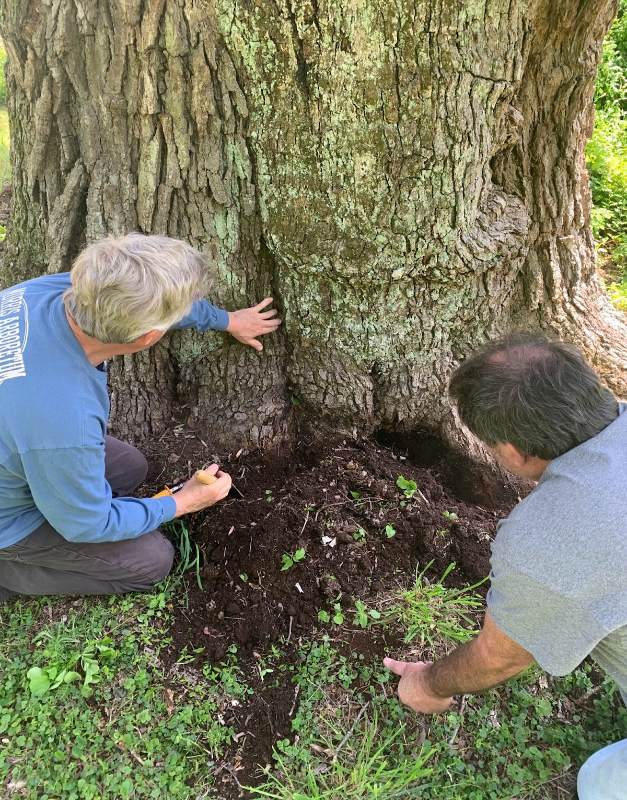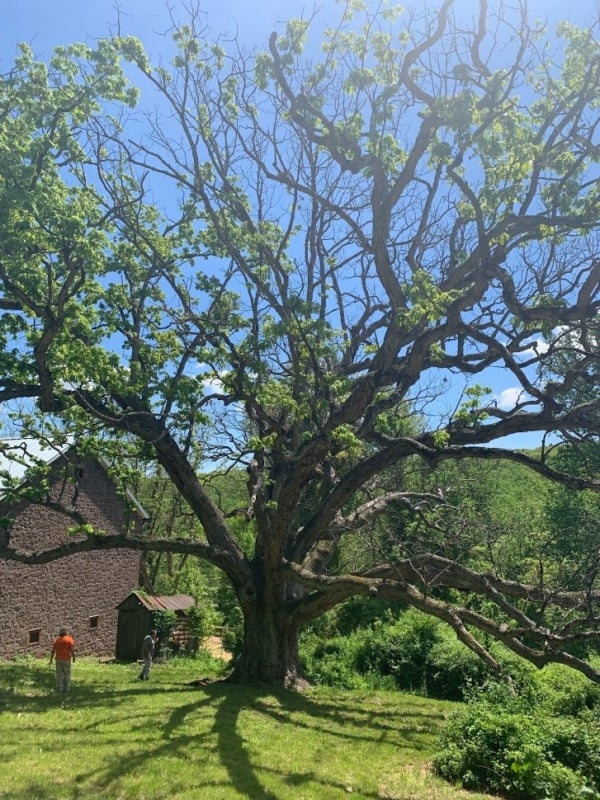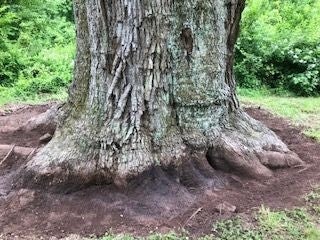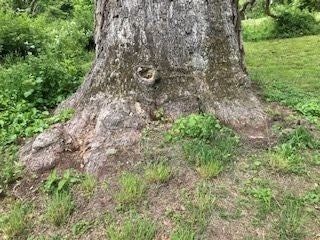Blog


Morris Arboretum & Gardens’ Urban Forestry Consultants recently visited North Coventry Township in Chester County to inspect a white oak (Quercus alba) known locally as the “Great Oak.” The tree’s owner and the arborist caring for it became concerned about the biological health when many branches on half of the tree failed to leaf out this spring.
Considered a “William Penn Tree,” the Great Oak is one of 100 or so living trees in the region that were alive around the time William Penn landed in Pennsylvania in 1682. While the tree’s exact age is unknown, estimates range from 400–600 years old, well before Penn’s landing. We arrived on the scene to assess why this ancient tree was declining after all these centuries.
We started by measuring the tree. Although not exceptionally tall at 60 feet, the Great Oak has a 76-inch diameter and a massive canopy spread of about 115 feet. From there we inspected the entire tree from branches to trunk flare. There was deadwood, branch wounds, and old pruning wounds all over the tree, which showed its resilience through the centuries. About half of the canopy was either dead or struggling to put out leaves.
Around the Great Oak’s base, we found that the trunk had been buried quite a bit by mulch or dirt over time. Tree trunks are adapted to grow above ground, and burying the trunk creates moist conditions that invite fungi and other organisms to attack and decay the now buried trunk. We found the bark on the buried buttress roots was decayed, which was compromising the connection between the roots and canopy, along with the presence of burnt crust fungus (Kretzschmaria deusta) within the folds of the bark. This species of fungus slowly erodes both living and dead tree tissue, and without an 100% effective treatment available, the Great Oak’s biological and structural health is threatened.


By our estimations the Great Oak will probably survive another 10–20 years. It is not too close to any roads or buildings that would be threatened by falling branches, so the tree will remain standing as is. In the coming years, fungi and insects will continue the decay process.
We recommended that the excess soil around the Great Oak’s base be removed, and a mulch ring be placed around the tree for some extra nutrients and protection from mowers. To address the fungus at the base and encourage a more fibrous root system, we recommended that the tree be treated with Paclobutrazol, a tree growth regulator that has anti-fungal properties.


When the Great Oak eventually dies, it could take decades to fully decompose. Even in death, the Great Oak will benefit local wildlife. Standing dead trees, or snags, provide nutrients and critical habitat for over 1,000 different species. Woodpeckers and squirrels will depend on the holes in its trunk for shelter, while fungi, bacteria, and thousands of insects will feed on the branches as they fall.
It’s impossible to count how many generations of birds, squirrels, and other travelers the Great Oak has sheltered. We don’t know how many of its millions of acorns have grown—and are growing—into the forests of our generations past, present, and future. It is amazing to think about how much life one tree has supported over its lifetime. For that, I give thanks to the Great Oak as it begins its final journey back to the earth it sprouted from centuries ago.